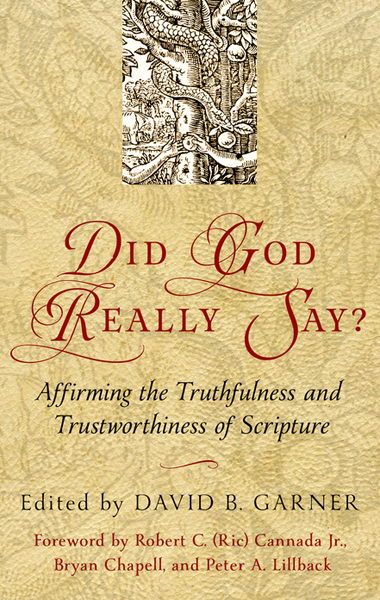
The devil made the headlines in Britain earlier this month. On February 13th the General Synod of the Church of England genteelly voted him into retirement. In one sense it came as no surprise. The reference in its baptismal liturgy to fighting ‘manfully against the world, the flesh and the devil’ was causing increasing discomfort in Anglican circles and since July of last year it was clear it would become a matter for formal ecclesiastical debate. Even so, when the result was announced, it came as a shock, not merely to the evangelical faithful, but also to the general public.
What was particularly noticeable was the response this decision generated from the secular media. Given their often less-than-sympathetic stance towards the teachings of the Bible, one might have expected a loud ‘hurrah’ to have gone up from Fleet Street [the traditional centre of British journalism]. But that was not the case. Even editors who were keen to highlight the Synod’s rationale behind its decision were clearly more than a little bemused by the thought that the church could unilaterally choose to airbrush Satan out of the biblical narrative. Other correspondents and columnists went further. Peter Stanford writing in the Daily Telegraph on 14th February called the whole episode ‘one big muddle’, spoke of ‘the fog of embarrassment over the mediaeval skeleton in the ecclesiastical cupboard’ and queried what other drastic decisions may be lurking in the wings to remove the devil completely.
The rationale behind the Synod’s decision – which drew support from at least some of its conservative members – was that the notion of there being a devil is prone to gross misunderstanding in today’s culture, especially among the young. But it somewhat begs the question as to how such cultural misunderstandings should be handled by the church – regardless of the age of those who fall prey to them. If anything, the cultural misunderstandings that surround the idea of ‘God’ are even more numerous and damaging. Does that mean that he will be the next victim of the liturgical airbrush?
The reality is that since all the liturgies of the Church of England – not to mention those of all other church bodies – claim to have their roots in Scripture, then the challenge for the church is not to remove those bits that are hard to understand, but do a better job of explaining them to our culturally confused generation. (Though I suspect the real issue is not what is understandable to our contemporaries, but what is palatable to them and does not offend their sensibilities.)
No serious reader of the Bible can fail to notice that it is impossible to read it without encountering the devil throughout its entire narrative and find him deeply embedded in all it teaches.
After Adam and Eve, he is the next intelligent creature we meet in the Genesis record (Ge 3.1). He is shrewd, capable of communication and clearly no friend either of God, or of his pristine creation. And with breath-taking speed, he leads our first parents into the single act of rebellion that would trigger the fall and bring the entire creation under God’s curse.
His dark and destructive intent surfaces again in the opening chapters of Job where he seeks divine permission to test God’s righteous servant to the limits (Job 1.6-12; 2.1-6). And when that permission is granted – albeit with limits imposed – he takes full advantage of the opportunity to inflict deep pain and suffering on this man and his family.
Isaiah and Ezekiel present what have often been regarded as oblique allusions to Satan’s own fall (Isa 14.12-15; Eze 28.12-19). His personal history from his time as ‘Day Star’ – transliterated ‘Lucifer’ in the KJV – is woven in with the root of corruption in the kings of Babylon and Tyre.
In the prophecy of Zechariah we see him acting in line with what the name by which he is best known, ‘Satan’, means. The ‘accuser’ accuses Joshua, the High Priest (Zech 3.1-2).
In the New Testament Satan is present and active in an even more obvious way than he had been before the coming of Christ. He not only steps into the open to challenge Jesus head on in the wilderness through his temptations (Mt 4.1-11; Mk 1.12-13; Lk 4.1-13), but deploys his army of demons on a scale hitherto not witnessed in the history of the world.
We also see him taking advantage of Peter at the very moment when he had just confessed Jesus as the Christ (Mt 16.23). As the cross looms on Jesus’ horizon, he gets such a hold on Judas as to persuade him to betray Jesus to the Jewish authorities (Lk 22.3; Jn 13.27)).
If anything, the remainder of the New Testament books have even more references – with more wide-ranging descriptions of both what he is and the threat he poses to God’s people – than anything seen in the earlier stages of God’s revelation. Paul portrays him as ‘the prince of the power of the air’ (Eph 2.3) – highlighting his far-reaching influence in the affairs of this world. Peter warns that ‘he prowls about like a roaring lion, seeking someone to devour’ (1Pe 5.8). In Revelation, he is depicted as the dragon (Rev 12.7-17) who, ever since the incarnation of Christ, has been hell-bent on wreaking havoc in and on the church.
References to the devil in the Bible – both direct and indirect – are many and varied and there is not time to chart them all here. But any serious student of Scripture is forced to acknowledge its divine author wants us to take the devil seriously.
No matter how uncomfortable it may feel to modern minds and sensibilities to anything that does not fit in a material world, as far as the Bible is concerned, Satan is all too real. That grim reality has been marked consistently in the great works of art in literature, the visual arts, music, drama and film right down to the present time. To now declare him ‘inappropriate’ is in itself utterly inappropriate (not to mentioned vainly naïve).
It was C.S. Lewis in The Screwtape Letters who made the point that a favourite ploy in Satan’s black ops within our race is persuade people he doesn’t exist. But let me leave the last word with Hal Lindsay. He is anything but my favourite author and I am hard pressed to think of any truly valuable contribution he has made to an accurate understanding of the Bible, but the title of his book about the devil is both salutary and priceless: Satan is Alive and Well on Planet Earth. Perhaps someone should send a copy of the cover to the General Synod and its commissioners.

The Alliance of Confessing Evangelicals is member supported and operates only by your faithful support. Thank you.
















 © Alliance of Confessing Evangelicals
© Alliance of Confessing Evangelicals


